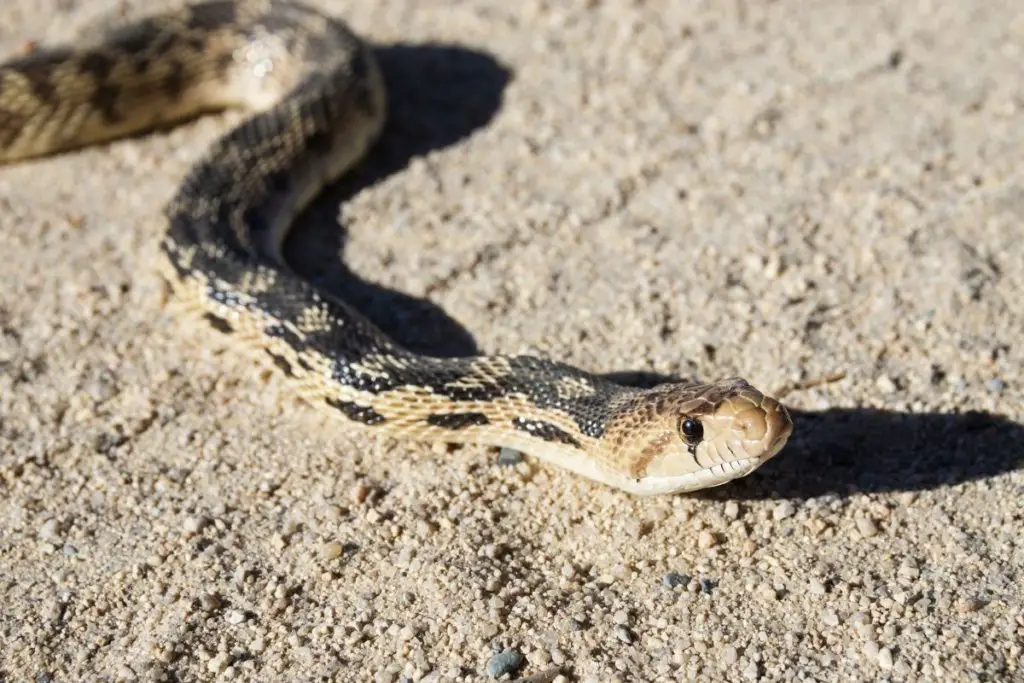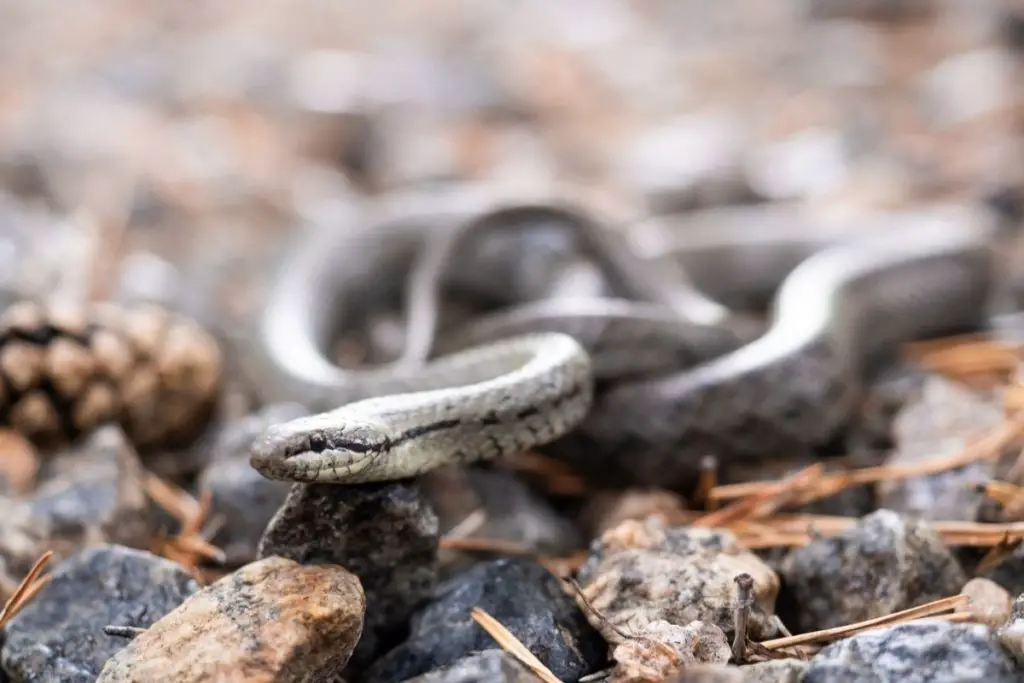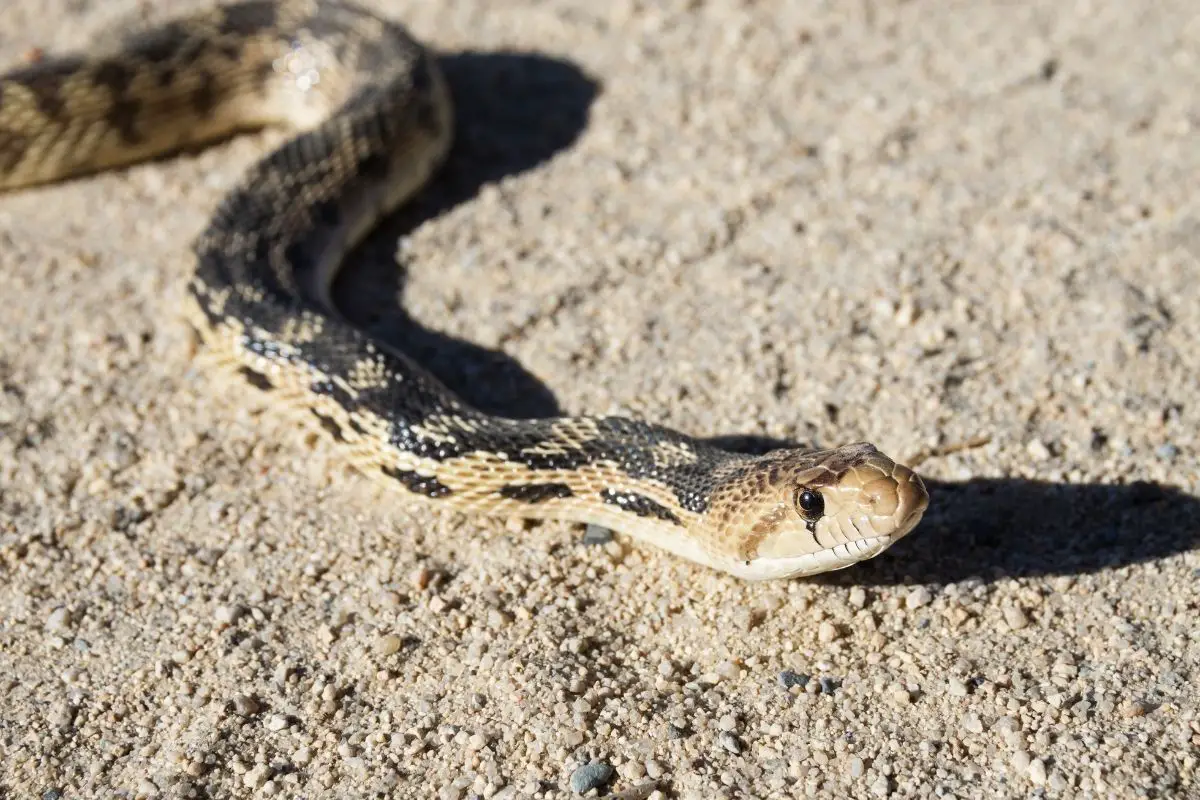It can be hard to imagine a snake moving backwards, can’t it? Most probably, in all the videos and documentaries you have seen, you have only seen them slither forward.
This begs the question; can snakes even move in the opposite direction?
Can a snake move backward? Snakes can move backward indeed, but not all species of snakes can move backward and snakes, in general, don’t like moving backward because it expends much more energy than moving forward. The direction of a snake’s scales makes it difficult to move backward because of the friction with the ground.
Surprising, isn’t it? I bet you still can’t imagine a snake moving backward in your head. However, they really can. To understand why snakes really don’t like to move backward, when they do move backward, and everything else you need to know about how they move, keep reading.
Contents
How do snakes move?

Snakes move by contracting the muscles in their bodies which cause them to slide forward. There are basically four different ways snakes move, also known as the four locomotions of snakes.
Here are the four different ways snakes move:
Serpentine method
In this method, snakes move in a wavy line. This technique allows snakes to travel the greatest distance in the least time.
Concertina method
Snakes use this technique by expanding and contracting like an accordion. Snakes twist their bodies from side to side, much as a spring does, then move. This is the movement the snake will do to take down the prey.
Sidewinding
This is also known as lateral movement. The snake creates vertical waves and then moves laterally in this technique.
Rectilinear method
In this technique, the snake crawls or walks in a straight line with its body stretched out.
Most people believe that snakes will only slither forward or backward, but this is not true. Snakes will use one or a combination of the above methods to reach the spot they want to reach.
Don’t have time to read all of this? Here is an excellent YouTube video explaining and showing how snakes move:
How do snakes move backwards?
Snakes use the same muscle groups in both directions. They curl their bellies, for example, but instead of going forward, they retreat.
Snakes can also back away, albeit it is infrequent. Snakes rarely use this movement because it is often not needed.
Snakes are not very active animals, they do not move a lot, and they do not find themselves in situations where they need to move backward a lot of the time.
You can find plenty of videos on Youtube of snakes moving backward, but I particularly like this video of the snake entering a weep vent backward:
Here is another video showing a Tiger snake moving backwards:
Tiger snakes are able to move backwards because their scales can grip into the ground.
Can a snake become stuck when moving backward?
Snakes can get themselves in quite a pickle sometimes and this is not limited to people with snakes as pets! Sometimes you can hear stories of snakes getting trapped inside water tanks or even toilets, but they can also end up getting stuck when moving backward.
A snake can also get itself into a bit of a mess if it’s in the middle of shedding its skin and can’t find its way out again. If you have ever woken up to an old shed skin, then there is no need for alarm! It happens all the time as snakes regularly.
There are some species of snakes that can actually move backwards quite well, but for the most part, snakes do not like to move backward and it is an infrequent occurrence when they do. If you’re ever lucky enough to see a snake slither backwards in person, be sure to take a video! It’s definitely something you don’t see every day.
Why snakes don’t like moving backwards

Snakes have a lot of difficulty progressing backwards due to the fact that their scales are positioned in such a manner that they offer significant resistance when attempting to slither backward, just like skateboarding backward – not impossible but not very productive.
When snakes have to move backward, they will need to expend a lot of energy to do so, and snakes do not like expending a lot of energy doing anything.
Snakes are pretty tame when it comes to expending energy, and they will often not do anything that requires much energy. This is why most snakes will rarely if ever choose to move backwards.
When a snake has to move backward, it’s likely to choose to turn its whole body the other way to move backward than it is to turn backward while in the same position.
The exception to that would be when the snake physically can’t or when doing so will expose the snake to predators such as dogs, for example. You can learn why dogs hunt and kill snakes here by the way.
Conclusion
Snakes can move backwards, but they don’t do it very often. In fact, a snake is more likely to turn around and go the other way instead of going backward. This can be due to their scales being position in such a manner that prevents them from slithering back easily or because expending too much energy while doing so can lead to exhaustion.
Luckily, if you ever get lucky enough to see one slither away from you on its belly backwards rather than forward, take out your phone and record it! It’s not something you’ll see every day – especially since most snakes prefer moving forward over anything else.
Related Questions
Can Snakes slither backwards?
Snakes can slither backwards indeed but they prefer to not do it very often because it requires a lot of energy and causes much friction, so the snake would try to avoid doing so whenever possible.
Can a snake back up?
Only a small number of snakes are not (or have not been discovered) retreating backward. It’s a myth that snakes can’t move backward, according to conventional logic. Because the scales on their belly overlap one another, it would appear that they are unable to move backwards.
Can a snake only move forward?
Snakes can move forward and backward, but they prefer to mostly move forward because of the way their scales overlap on their bellies. If you were to try and move backward, it would be difficult due to the amount of resistance created by these overlapping scales.
Helpful Resources
A Study shows how snakes slither
If you like this article, please share it!


